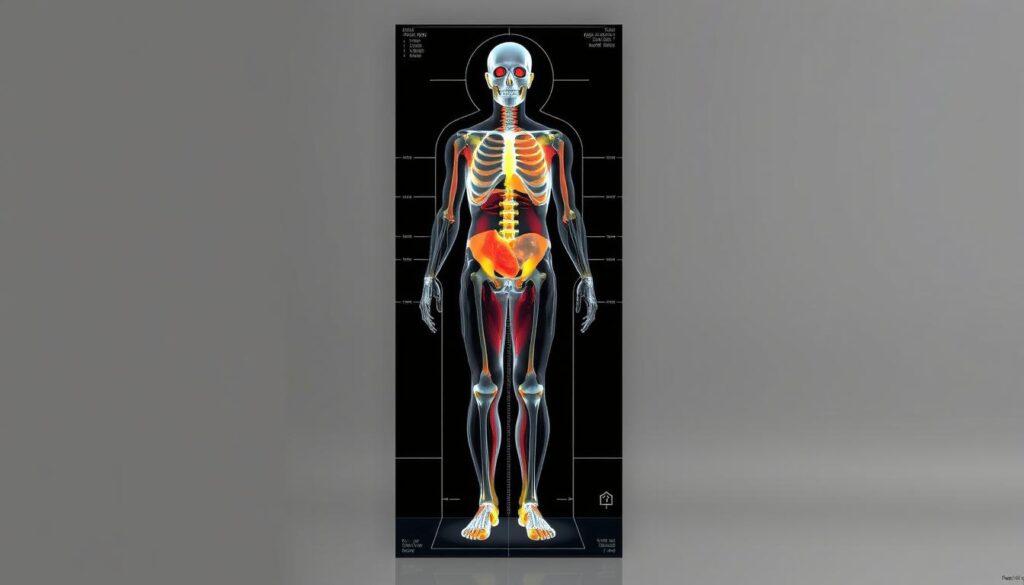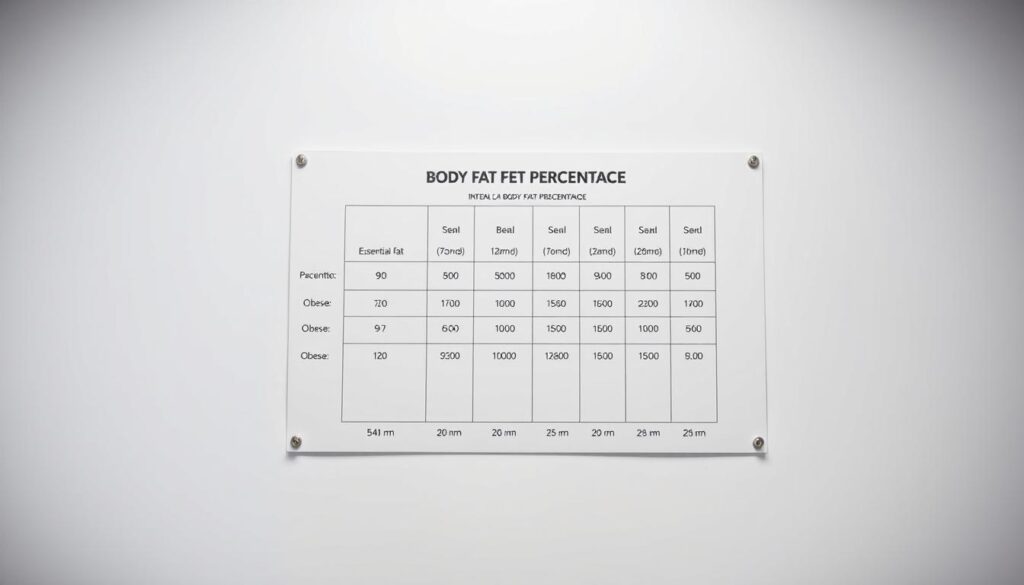Imagine stepping on a scale and seeing a “healthy” number—only to realize it tells you nothing about your strength, energy, or long-term health. That’s because body composition, not just body weight, determines how your physique functions. While most focus on losing pounds, the real secret lies in understanding what makes up those pounds.
Lean tissue—muscle, bones, organs, and water—fuels metabolism, supports mobility, and protects against chronic disease. Yet many overlook this critical metric, relying on outdated tools like BMI. Research shows that prioritizing muscle mass over fat percentage improves metabolic efficiency, reduces injury risk, and even enhances mental clarity.
We’ll explore how to measure these fat-free tissues accurately and why they matter more than the number on the scale. From boosting calorie burn to increasing bone density, optimizing your body composition unlocks benefits far beyond aesthetics. Let’s redefine what true fitness means.
Key Takeaways
- Lean tissue includes muscles, bones, organs, and water—not just muscle.
- Higher muscle mass correlates with faster metabolism and better health outcomes.
- Body weight alone doesn’t reflect fitness levels or overall wellness.
- Accurate measurement methods include DEXA scans and bioelectrical impedance.
- Balanced body composition supports injury prevention and long-term vitality.
Understanding Lean Body Mass
Unlocking your body’s potential starts with understanding its building blocks. While many fixate on total weight, the balance between muscle, bone, water, and fat determines how efficiently your system operates. Let’s break down what truly shapes your physique.

Definition and Components
Lean body mass refers to everything except stored fat—skeletal muscle, organs, bones, and bodily fluids. These elements drive metabolic activity, support joint stability, and regulate energy levels. For example, every pound of muscle burns 50% more calories daily than fat tissue.
Bone density and hydration status also play critical roles. Strong bones reduce fracture risks, while proper water balance ensures nutrient transport and temperature control. Together, these components form a foundation for lasting vitality.
Lean Body Mass vs. Body Fat
Body fat serves as energy storage, but excess amounts strain organs and slow metabolism. A balanced fat percentage—typically 10-20% for men and 18-28% for women—supports hormone production without compromising health.
Unlike BMI, which ignores tissue types, body composition metrics reveal how much of your weight comes from functional vs. inert sources. Prioritizing lean mass over fat percentage enhances metabolic efficiency, turning your body into a calorie-burning engine even at rest.
What is a good lean body mass?
Numbers on a chart mean little without context—this is especially true for physique metrics. Healthy ranges shift based on age, gender, and activity levels. A 25-year-old athlete and a 50-year-old office worker require entirely different benchmarks.

Making Sense of the Metrics
Body fat percentages below 6% in men or 16% in women often harm hormone balance and immunity. For most people, 10-20% (men) or 18-28% (women) supports vitality without sacrificing health. These ranges account for essential fat stored in organs and bone marrow.
Tailoring Targets to Your Routine
Active lifestyles demand higher skeletal muscle ratios. Compare these typical profiles:
| Group | Body Fat Range | Lean Mass Focus |
|---|---|---|
| Male Athletes | 6-13% | Power, endurance |
| Female Athletes | 14-20% | Mobility, recovery |
| Active Adults | 18-24% (Men) 25-30% (Women) |
Metabolic health |
Strength training becomes crucial after 30, when muscle mass declines 3-8% per decade. Regular body composition analysis helps adjust exercise routines and nutrition. For example, endurance athletes might prioritize hydration metrics, while weightlifters track skeletal muscle growth.
Three monthly check-ins provide clearer trends than daily weigh-ins. Pair measurements with energy levels and workout performance for a complete picture. Remember—optimal numbers empower people, not restrict them.
Optimizing Body Composition for Health
Your body operates like a precision engine—every component impacts performance. Three elements form its core framework: muscle, bone, and water. Together, they dictate metabolic speed, structural resilience, and cellular function.
The Role of Muscle, Bone, and Water
Muscle tissue acts as your metabolic furnace, burning calories 24/7. For every pound gained, resting energy expenditure rises by 6-8%. Bones aren’t just scaffolding—they store minerals and produce blood cells. Proper hydration ensures nutrients reach these tissues efficiently.
Consider this comparison of essential components:
| Component | Metabolic Impact | Training Strategy |
|---|---|---|
| Muscle | High calorie burn | Resistance training 3x/week |
| Bone | Mineral storage | Weight-bearing exercises |
| Water | Nutrient transport | Daily hydration monitoring |
Comparing Lean Muscle Mass and BMI
BMI calculators ignore tissue quality—a bodybuilder and sedentary person could share the same score. Body composition analysis reveals what matters: functional mass versus inert fat.
DEXA scans show athletes often have “overweight” BMIs despite low fat percentages. Focus on building muscle through progressive overload instead of chasing scale numbers. Those prioritizing resistance training maintain 23% better metabolic rates long-term compared to cardio-only routines.
Balance matters. Extreme dieting sacrifices bone density and muscle tissue. Regular strength sessions paired with adequate protein intake create sustainable results. Remember—health lives in your tissue ratios, not arbitrary BMI categories.
Strategies to Build and Maintain Lean Body Mass
Building a resilient physique requires more than wishful thinking—it demands strategy. We’ll break down three pillars that transform your tissue composition: smart nutrition, targeted training, and precise tracking.
Fueling Growth Through Nutrition
Protein acts as your body’s building blocks. Aim for 1.6-2.2 grams per kilogram of body weight daily from sources like eggs, salmon, and lentils. Pair these with complex carbs (quinoa, sweet potatoes) and healthy fats (avocados, nuts) for sustained energy.
Timing matters. Consuming 20-30 grams of protein within two hours post-workout maximizes muscle repair. Hydration also plays a role—dehydration can reduce strength output by 15%.
Powering Up With Resistance Work
Strength training triggers hypertrophy—muscle growth through controlled damage. Compound lifts like squats and deadlifts engage multiple groups efficiently. Try this weekly split:
| Day | Focus | Sample Exercises |
|---|---|---|
| 1 | Lower Body | Barbell squats, lunges |
| 3 | Upper Body | Bench press, pull-ups |
| 5 | Full-Body | Deadlifts, push-ups |
Both men and women benefit from progressive overload—gradually increasing weights or reps. Studies show women gain muscle at similar rates to men when training intensity matches.
Tracking Beyond the Mirror
Monthly body composition scans reveal what scales hide. DEXA identifies tissue changes down to 1% accuracy. Calipers offer affordable fat percentage estimates for home use.
Watch for trends. A 2% lean mass drop signals needed dietary adjustments. Consistent resistance training paired with adequate protein prevents age-related loss. Remember—progress isn’t linear, but persistence pays.
Considerations Across Age and Gender
Time reshapes our bodies in ways scales can’t measure—especially regarding muscle and fat distribution. Biological factors like aging and sex hormones create distinct needs for maintaining optimal tissue ratios.
Metabolic Shifts With Aging
After 30, adults lose 3-8% of muscle mass per decade. This age-related decline slows metabolism by 2-4% each decade. Resistance training becomes non-negotiable—studies show it reverses 50% of sarcopenia effects when paired with adequate protein intake.
| Age Group | Protein Needs (g/kg) | Exercise Focus |
|---|---|---|
| 30-50 | 1.6-2.0 | Strength maintenance |
| 50+ | 2.0-2.4 | Muscle preservation |
Hydration needs also shift. Older adults often require more water due to reduced thirst signals. Dehydration accelerates muscle breakdown, worsening age-related losses.
Biological Sex Differences
Women naturally carry 6-11% more body fat than men for reproductive health. Estrogen promotes fat storage in hips/thighs, while testosterone aids male muscle growth. A 2022 review found women need 18-28% fat for hormonal balance versus 10-20% for men.
Body measurements like height and frame type further personalize targets. For example, taller individuals often have higher lean mass baselines. Regular diet reviews help adjust calorie and nutrient ratios as needs evolve.
Three strategies combat these challenges:
- Prioritize protein-rich meals (30g/meal)
- Track hydration alongside diet changes
- Update fitness plans every 6 months
Tailored approaches beat generic plans. Annual body composition reviews catch subtle shifts before they impact health. Your index of muscle vs. fat matters more than any single number.
Conclusion
True fitness isn’t measured by a single number—it’s built through the balance of powerful tissues and smart habits. Prioritizing muscle growth over scale weight reshapes how your system functions, boosting metabolic rates and long-term resilience.
Body composition analysis reveals what BMI and total body weight hide: the ratio of functional tissue to stored fat. Studies show those with higher mass percentages in muscle and bone maintain 23% faster metabolisms, even during rest. This shift supports joint health, energy levels, and disease prevention.
Effective strategies combine protein-rich diets, resistance training, and regular monitoring. Tracking tools like our lean body mass calculator help identify progress beyond superficial metrics. Aim to reduce excess fat percentages while nurturing muscle through compound lifts and recovery-focused routines.
View your physique as interconnected systems—not isolated numbers. Annual scans and hydration checks prevent age-related declines in tissue quality. Whether you’re building strength or preserving mobility, sustainable habits trump short-term fixes.
Ready to transform your approach? Start with one change: swap daily weigh-ins for monthly body composition reviews. Your future self will thank you.


